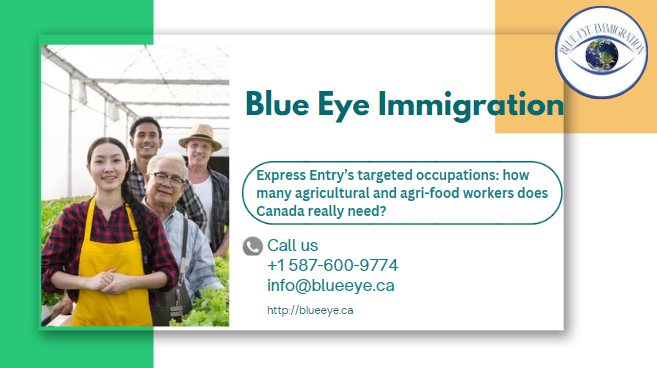Agriculture and Agri-Food is one of five occupational sectors that Immigration, Refugees and Citizenship Canada (IRCC) has chosen to prioritize through Express Entry category-based draws in 2023.
In an attempt to aid key employment sectors with some of the largest labour market gaps in this country, IRCC introduced category-based selection draws for Express Entry earlier this year.
These draws, the first of which took place on June 28, are designed to attract immigration candidates with work experience in these particular sectors* to come to this country. This is because the government has identified a need for workers in these sectors for Canada to continue to develop and thrive.
*2023 Express Entry categories include healthcare; science, technology, engineering and mathematics (STEM); transport; trades; and agriculture/agri-food.
As a result, while standard Express Entry draws rank candidates based on their Comprehensive Ranking System (CRS) scores, these draws instead prioritize candidates with specific employment experience.
Why agriculture/agri-food was chosen as a targeted Express Entry category
The Canadian Agricultural Human Resource Council (CAHRC) projects that “[this] sector will have 123,000 more jobs than the domestic labour force can fill” by 2029.
Such a projection justifies why Canada sees this sector as one that requires focus as an Express Entry category, as agriculture and agri-food are key to Canada’s sustainability and development.
Also according to the CAHRC, “the agriculture and agri-food sectors … contribute over $122 billion dollars annually, or 6.3% of Canada’s GDP, and as demand for Canadian food and agriculture products increases worldwide, this contribution to the economy is expected to grow.”
This further reinforces the value of the agriculture and agri-food industries to Canada as a country, once again validating why IRCC chose this sector as worthy of its own category-based Express Entry draws in 2023.
How many agriculture/agri-food workers does Canada really need?
On April 29, the Canadian Broadcasting Corporation (CBC) released a story on agriculture industry labour. This story, quoting the president of Nova Scotia’s Federation of Agriculture, says that the province could face a shortage of more than 2,500 farm workers by 2029.
This comes at the same time that Government of Canada Job Bank data notes employment declines of more than 20,000 industry workers in one Canadian province over the last decade. Specifically, Job Bank data indicates that provincial employment “in this sector [across Alberta] decreased by 28,300 jobs (-44%) from 2013 to 2022.” As another example, in British Columbia, industry employment has declined by roughly 10% over the last 10 years.
Considering that certain provinces need more workers in this sector than others, this data is an indication of significant labour shortages across Canada in the agriculture and agri-food industries.
Just two weeks before the aforementioned story, CBC also cited a report which suggested that nearly 40% of Canadian farmers are expected to retire within 10 years. Add to this the reality that 66% of farmers “do not have a succession plan” and that researchers “expect the agriculture industry, [at the same time], to be down 24,000 farm, nursery and greenhouse workers” according to the same report.
Considering these factors, this older report concludes that Canada needs to “bring in 30,000 farm-focused newcomers” to fill the labour gap in this industry.
In all, recent stories and data seemingly suggest that Canada will need several tens of thousands of agriculture and agri-food workers to adequately address labour shortages in this industry over time.
What opportunity does this present for prospective immigrants to Canada?
Data from the CAHRC indicates that Canada’s agriculture sector has relied increasingly on foreign workers because this country has lacked the domestic talent required to fill labour gaps in this sector.
In fact, in 2017, over 75% of the labour gap in Canada’s agriculture and Agri-food industries was addressed by Canadian migrants “and more than one in six people in Canada’s agricultural workforce (17%) were foreign workers.”
Considering the fact that Canada was still unable to fill over 16,000 jobs in 2017, and factoring in the growth of the labour gap in this industry since then, prospective immigrants to Canada interested in agriculture/agri-food work may see a sizeable amount of employment opportunity through this targeted occupational category.
History of agriculture/agri-food Express Entry draws to date
IRCC recently held its first category-based draw for agriculture/agri-food workers.
Back in August this year, data obtained from IRCC by the Globe and Mail indicated that agriculture/agri-food category-based draws would account for “one to two” percent of all remaining Invitations to Apply (ITAs) issued under Express Entry across the remainder of 2023.
The results of every prior Express Entry draw can be found here, and this page will be updated anytime a new draw occurs.
